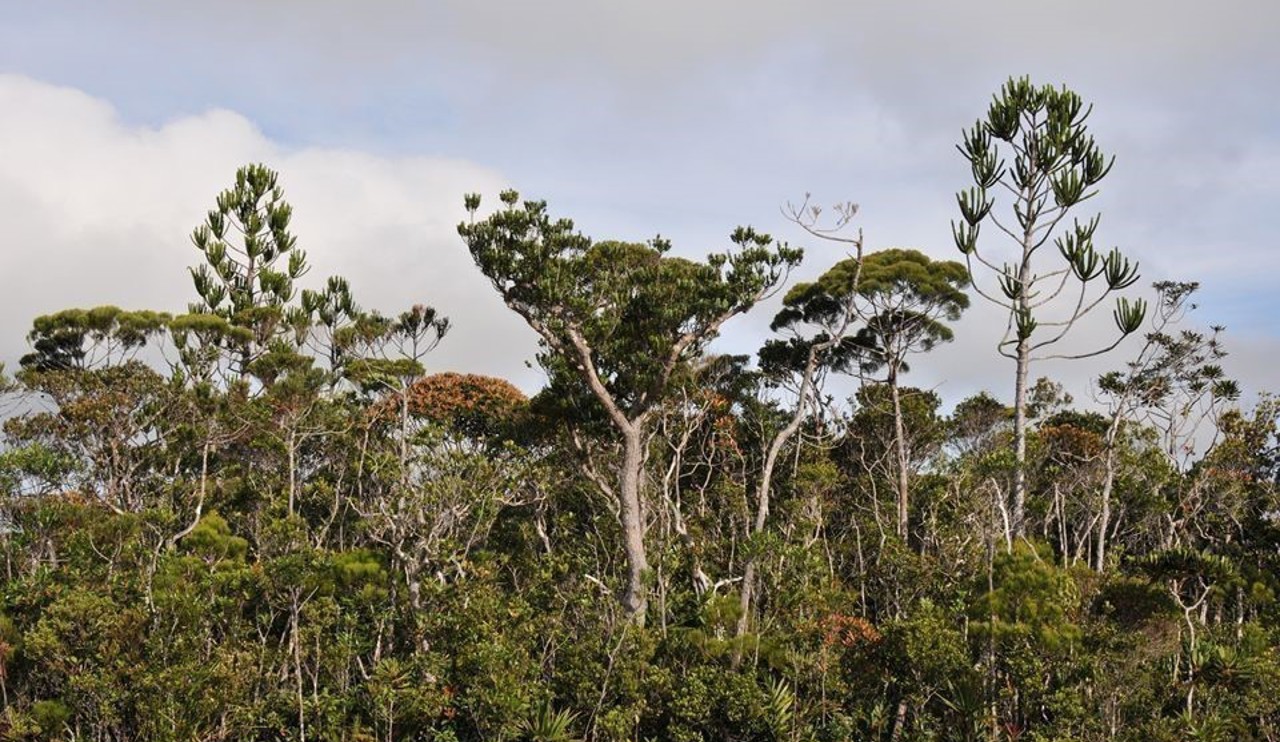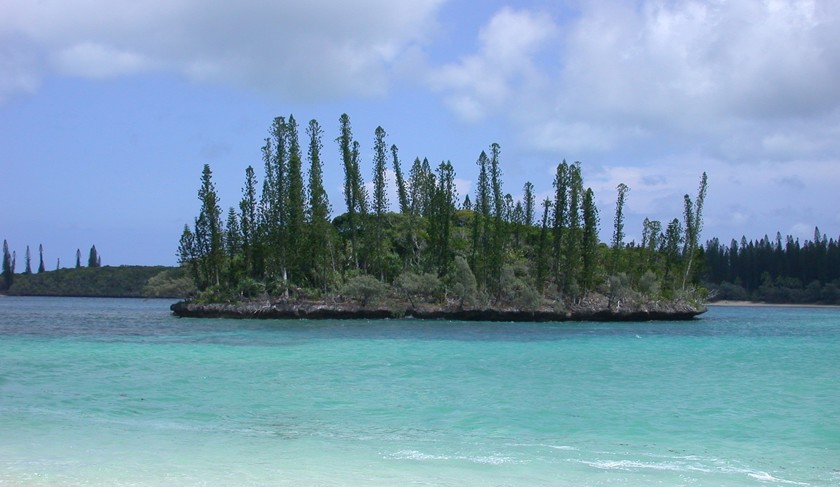- 20 Araucaria species worldwide
- 14 Araucaria species are endemic to New Caledonia
- 11 of the 14 species (78%) are threatened with extinction in the wild
The genus Araucaria (Araucariaceae, Monkey Puzzle trees) is an example of one of the world’s most charismatic plant groups.
The Chilean forests of Araucaria araucana are world famous, and the species is a cultural icon in southern South America. However, the main diversity of Araucaria is on New Caledonia, where 14 of the world’s 20 species occur. This small (~19,000 km 2) Pacific Ocean biodiversity hotspot has a remarkable flora with high levels of endemism ( ~75%), including many species known from only one or very few locations. All 14 Araucaria species are endemic to the island and are found in habitats ranging from sea-level to the summits of the highest mountains (~1600 m), showing considerable morphological and ecological diversity. They feature on the island’s coins and banknotes, and are embedded in the culture of the Kanaks, the island’s indigenous people.
Despite their prominent status, 11 out of the 14 Araucaria species (78%) are threatened with extinction in the wild because of open cast mining, fires, and habitat destruction. Levels of threat are likely to increase even further as New Caledonia harbors up to 30% of the world’s nickel deposits and has recently entered an unprecedented phase of open mine expansion.
Current research on New Caledonian Araucaria
Current research on Araucaria at RBGE focuses on the phylogenetic relationships of the 14 New Caledonian species using a custom designed Araucaria bait set targeting more than 2000 genes. Using multiple accessions per species, we especially aim to resolve relationships in the 'big leaved clade', comprising A. rulei, A. biramulata, A. montana, A. laubenfelsii and A. goroensis. We also aim to carry out population genomic analyses using the large silica gel collection acquired during three RBGE expeditions to New Caledonia in the early 2000s. This will help to assess population connectedness, gene flow, potential hybridisation events and provide a sound basis for establishing conservation guidelines.
Cryptic diversity in New Caledonian Araucaria
Our research highlighted the presence of a previously unrecognized species in this flagship group, which led to the description of a new species, Araucaria goroensis, in 2017.
See Ruhsam M et al (2016). Hidden in plain view: Cryptic diversity in the emblematic Araucaria of New Caledonia, American Journal of Botany, 103(5):888-98 and Mill R R et al. (2017). Araucaria goroensis (Araucariaceae), a new monkey puzzle from New Caledonia, and nomenclatural notes on Araucaria muelleri, Edinburgh Journal of Botany, 74(2): 123-139.

Phylogenetic relationships in New Caledonian Araucaria
Our research has provided the most resolved evolutionary relationships between New Caledonian Araucaria species so far.
See Ruhsam M et al. (2015). Does complete plastid genome sequencing improve species discrimination and phylogenetic resolution in Araucaria? Molecular Ecology Resources 15(5): 1067-1078.
New Caledonian Araucaria species are a relatively recent radiation
The New Caledonian species appear to have diversified between 19 and 3 million years ago, a long time after New Caledonia separated from Australia.
See Kranitz Mai et al (2014). Evolutionary diversification of new Caledonian Araucaria. PloS one 9: e110308.


